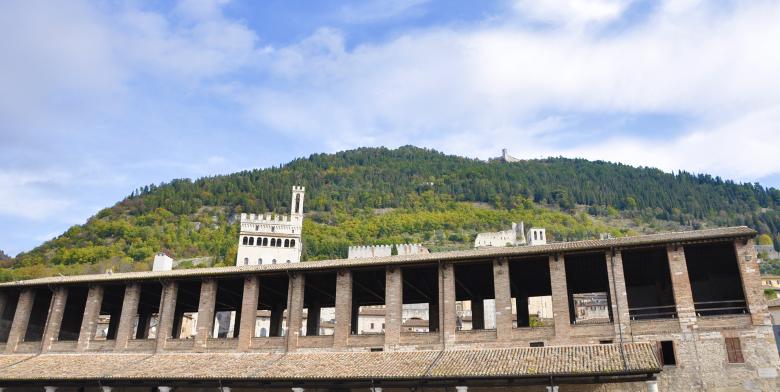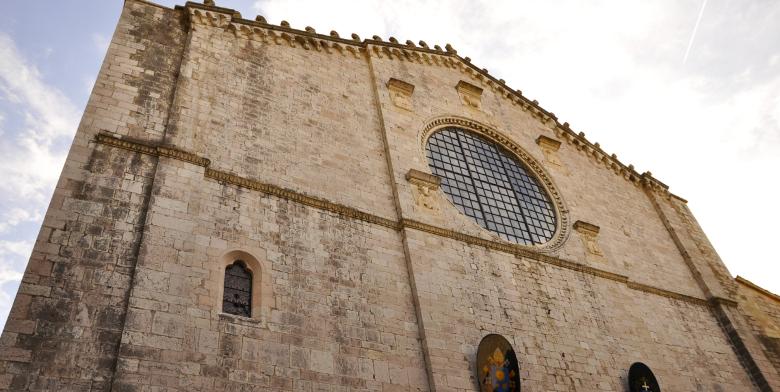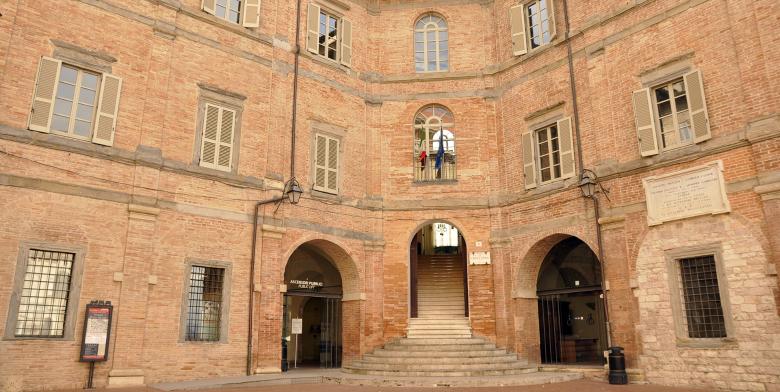The first floor is occupied by the portal which is accessed via a grand fan-shaped staircase; the lunette has a fresco by Bernardino di Nanni dell' Eugenia depicting the Madonna and Child between St. John the Baptist and St. Ubaldo (1495). The painting was heavily modified during the sixteenth-century by Benedetto Nucci. There are mullioned windows on either side of the portal.
The second floor is adorned with six windows in the centre topped by a dentil cornice connecting the arches.
The palace has a crenelated battlement and is embellished with ogival arches; the bell tower rises to the left of the building.
The right side and the rear of the palace, visible from Via dei Consoli, are very similar to the façade. Another building has been constructed to the left of the palace which has a portico the length of Via Baldassini.
The Sala dell'Arengo, or Great Arengo hall, occupies all of the first floor with its magnificent barrel vaulted ceiling. The interior of the building is now the home of the art gallery, on the top floor and the archaeological collection, now on display on the ground floor.
Curious fact
The Palazzo dei Consoli as the unfinished Praetorian Palace, was built during the first half of the fourteenth-century, at a time of rapid expansion for the city. At that time, it was felt there was a need for public spaces in line with the economic and political power that Gubbio then exercised over its territory. The ancient Platea Communis or public space at the top was abandoned and a beautiful suspended Piazza, a little lower down, was created, a centre piece bordering all the adjacent districts, but external to them, making it an impartial meeting place in political matters.
Information and useful advice.
Leave your car in the Piazza 40 Martiri carpark, you will easily be able to walk to the historic centre of Gubbio. Entrance to the Civic museum to view both the archaeological collection and the art museum requires the purchase of only one ticket.






























